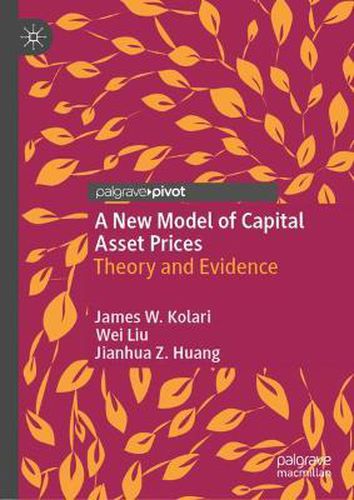Readings Newsletter
Become a Readings Member to make your shopping experience even easier.
Sign in or sign up for free!
You’re not far away from qualifying for FREE standard shipping within Australia
You’ve qualified for FREE standard shipping within Australia
The cart is loading…






This title is printed to order. This book may have been self-published. If so, we cannot guarantee the quality of the content. In the main most books will have gone through the editing process however some may not. We therefore suggest that you be aware of this before ordering this book. If in doubt check either the author or publisher’s details as we are unable to accept any returns unless they are faulty. Please contact us if you have any questions.
This book proposes a new capital asset pricing model dubbed the ZCAPM that outperforms other popular models in empirical tests using US stock returns. The ZCAPM is derived from Fischer Black’s well-known zero-beta CAPM, itself a more general form of the famous capital asset pricing model (CAPM) by 1990 Nobel Laureate William Sharpe and others. It is widely accepted that the CAPM has failed in its theoretical relation between market beta risk and average stock returns, as numerous studies have shown that it does not work in the real world with empirical stock return data. The upshot of the CAPM’s failure is that many new factors have been proposed by researchers. However, the number of factors proposed by authors has steadily increased into the hundreds over the past three decades.
This new ZCAPM is a path-breaking asset pricing model that is shown to outperform popular models currently in practice in finance across different test assets and time periods. Since asset pricing is central to the field of finance, it can be broadly employed across many areas, including investment analysis, cost of equity analyses, valuation, corporate decision making, pension portfolio management, etc. The ZCAPM represents a revolution in finance that proves the CAPM as conceived by Sharpe and others is alive and well in a new form, and will certainly be of interest to academics, researchers, students, and professionals of finance, investing, and economics.
$9.00 standard shipping within Australia
FREE standard shipping within Australia for orders over $100.00
Express & International shipping calculated at checkout
This title is printed to order. This book may have been self-published. If so, we cannot guarantee the quality of the content. In the main most books will have gone through the editing process however some may not. We therefore suggest that you be aware of this before ordering this book. If in doubt check either the author or publisher’s details as we are unable to accept any returns unless they are faulty. Please contact us if you have any questions.
This book proposes a new capital asset pricing model dubbed the ZCAPM that outperforms other popular models in empirical tests using US stock returns. The ZCAPM is derived from Fischer Black’s well-known zero-beta CAPM, itself a more general form of the famous capital asset pricing model (CAPM) by 1990 Nobel Laureate William Sharpe and others. It is widely accepted that the CAPM has failed in its theoretical relation between market beta risk and average stock returns, as numerous studies have shown that it does not work in the real world with empirical stock return data. The upshot of the CAPM’s failure is that many new factors have been proposed by researchers. However, the number of factors proposed by authors has steadily increased into the hundreds over the past three decades.
This new ZCAPM is a path-breaking asset pricing model that is shown to outperform popular models currently in practice in finance across different test assets and time periods. Since asset pricing is central to the field of finance, it can be broadly employed across many areas, including investment analysis, cost of equity analyses, valuation, corporate decision making, pension portfolio management, etc. The ZCAPM represents a revolution in finance that proves the CAPM as conceived by Sharpe and others is alive and well in a new form, and will certainly be of interest to academics, researchers, students, and professionals of finance, investing, and economics.